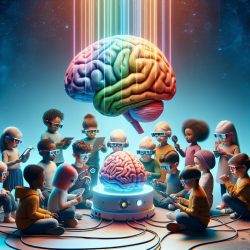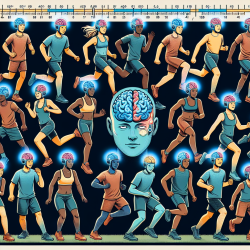Introduction
In the realm of pediatric health, congenital hypothyroidism (CHT) presents a unique set of challenges and opportunities for practitioners. Recent research has unveiled fascinating insights into the neuroradiological landscape of children with CHT, offering valuable implications for clinical practice. This blog explores the findings from the study titled Children with Congenital Hypothyroidism Have Similar Neuroradiological Abnormal Findings as Healthy Ones and provides guidance on how practitioners can leverage these insights to enhance their therapeutic approaches.
Understanding the Research
The study, conducted by Rachmiel et al., sought to compare the neuroradiological findings in children with CHT to those in healthy controls. Utilizing magnetic resonance imaging (MRI), the researchers discovered that the incidence of structural abnormalities in children with CHT was similar to that in healthy peers. Importantly, these abnormalities were not associated with neurocognitive impairments, challenging previous assumptions about the link between brain structure and function in CHT.
Key Findings
- Both CHT and healthy control groups exhibited a similar proportion of incidental findings, with no significant difference in the prevalence of abnormalities.
- Common findings included abnormalities in the sellar region, cerebellar ectopia, and increased signal intensity foci, none of which correlated with neurocognitive deficits.
- The study emphasizes that incidental findings in neuroimaging are not necessarily indicative of clinical significance, urging practitioners to consider the broader clinical picture.
Implications for Practice
For practitioners working with children with CHT, these findings underscore the importance of a holistic approach to patient care. Here are some ways to integrate these insights into practice:
- Comprehensive Assessment: While neuroimaging can provide valuable information, it should be complemented with thorough clinical and neurocognitive assessments to ensure a well-rounded understanding of the child's health.
- Communication with Families: Educate families about the nature of incidental findings and their lack of direct correlation with neurocognitive outcomes. This can help alleviate unnecessary anxiety and foster informed decision-making.
- Encourage Further Research: The study highlights areas where additional research is needed, particularly regarding the functional implications of sellar abnormalities. Encourage collaboration and participation in ongoing research to advance the field.
Conclusion
The findings from this study offer a refreshing perspective on the neuroradiological aspects of congenital hypothyroidism, challenging traditional views and encouraging a more nuanced approach to diagnosis and treatment. As practitioners, embracing these insights can lead to more informed, compassionate care for children with CHT.
To read the original research paper, please follow this link: Children with Congenital Hypothyroidism Have Similar Neuroradiological Abnormal Findings as Healthy Ones.










